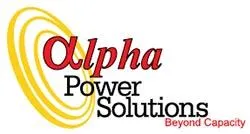
Understanding the differences between active power, reactive power, and apparent power
Electricity is a major operating cost for many businesses. Yet, few business owners understand how different types of power impact their energy bills. Without this knowledge, you might be paying more than necessary or even running equipment inefficiently.
This article breaks down the three main types of power—active power, reactive power, and apparent power—using simple explanations and analogies to make it easy to understand.
What Are the Different Types of Power?
Electrical power isn’t just about how much energy you use—it’s also about how efficiently you use it. The three main types of power are:
Active Power (kW): The actual power that performs useful work, like running machinery, lighting, or heating.
Reactive Power (kVAR): The power required to support certain equipment (such as motors and transformers) but that doesn’t directly contribute to productive work.
Apparent Power (kVA): The total power drawn from the grid, combining both active and reactive power.
Each type plays a role in how your business consumes electricity and how much you pay for it.

Active power: The Energy That Does the Work
Active power, also called real or true power, is the portion of electricity that actually performs work. This includes anything that directly contributes to business operations:
Running industrial machines and office equipment
Powering lighting and heating systems
Driving motors and pumps
Think of active power as the fuel that moves a vehicle forward—it’s what keeps your business running. Utility companies bill you based on how much active power you consume, measured in kilowatt-hours (kWh).

Reactive Power: The Hidden Cost of Running Equipment
Reactive power is needed for running equipment like electric motors, transformers, and HVAC systems. It maintains the electromagnetic fields that allow these devices to function properly.
Think of reactive power like the fuel a vehicle burns while idling at a red light—it doesn’t move the car forward, but it’s necessary for keeping the engine running.
While reactive power is not waste, drawing too much from the grid can increase the apparent power demand (kVA), leading to higher maximum demand charges. Instead of pulling this power from the grid, businesses can generate it onsite with Power Factor Correction (PFC), significantly lowering costs.

Apparent Power: The Total Power Consumption
Apparent power is the total power your business draws from the grid, combining both active and reactive power. It is measured in kilovolt-amperes (kVA) and represents the full demand placed on your electrical infrastructure.
To visualize this, consider the beer analogy:
Active power (kW) is the liquid beer—the portion you actually drink.
Reactive power (kVAR) is the foam—extra volume that doesn’t directly contribute to quenching your thirst.
Apparent power (kVA) is the entire glass—what the bar charges you for.
A business with high apparent power but low active power usage is essentially “paying for foam.” The goal is to reduce apparent power charges and improve efficiency.



Why Does This Matter for Your Business?
Understanding these power types can help businesses:
Reduce electricity bills by improving energy efficiency
Prevent equipment failures caused by electrical strain
Avoid excessive maximum demand charges (apparent power kVA)
Ensure compliance with utility regulations
Power Factor: The Efficiency Indicator
Power factor is the ratio of active power (kW) to apparent power (kVA). A high power factor means your business is using electricity efficiently, while a low power factor indicates inefficiency and higher costs.

How to Improve Power Factor
Businesses can improve power factor by:
Installing power factor correction (PFC) equipment to reduce apparent power demand
Upgrading to energy-efficient motors and transformers
Regularly maintaining electrical systems to avoid inefficiencies
Power Factor Correction: A Cost-Saving Investment
Power Factor Correction (PFC) helps businesses optimize their electricity use by reducing the amount of reactive power drawn from the grid. Instead, PFC equipment generates reactive power onsite, lowering the overall apparent power (kVA) demand.
Benefits of PFC:
Lower electricity costs: Reducing apparent power demand decreases maximum demand charges.
Increased system capacity: Freeing up power allows businesses to expand without costly electrical upgrades.
Extended equipment lifespan: Less strain on electrical components means fewer breakdowns and lower maintenance costs.
Common Misconceptions About Power Factor Correction
Many business owners misunderstand power factor correction. Here are a few myths debunked:
“Solar panels eliminate the need for power factor correction.” Solar and PFC systems are complementary, not interchangeable.
“Only large factories benefit from PFC.” Even small businesses can reduce costs with the right system.
“PFC equipment stores energy.” It doesn’t store energy but helps manage how power is consumed.
How to Determine If Your Business Needs PFC
If your business uses a lot of motors, HVAC systems, or transformers and you’re being charged for maximum demand (kVA), you may benefit from power factor correction.
Steps to assess your power factor:
Check your electricity bill: Look for maximum demand charges (kVA) rather than just kilowatt-hours (kWh).
Measure your power usage: Record your power profile to identify inefficiencies.
Consult an expert: Specialists can provide tailored recommendations based on your facility’s needs.
Our Case Studies
Read about how we saved businesses significant money on their monthly electricity bills, resulting in a huge return on investment:
Optimising Power Usage for Long-Term Savings
Managing power efficiently isn’t just about cutting costs—it’s about future-proofing your business. By reducing wasted energy, businesses can:
Lower operational expenses
Improve sustainability
Enhance system reliability and prevent costly downtimes
Investing in power factor correction and understanding how power is used will help your business operate more efficiently while keeping electricity costs under control. If you want to explore ways to improve your facility’s energy efficiency, consider working with an expert to analyze your power usage and implement tailored solutions.Contact Alpha Power Solutions today and see how we can significantly reduce your business’ monthly electricity costs.

